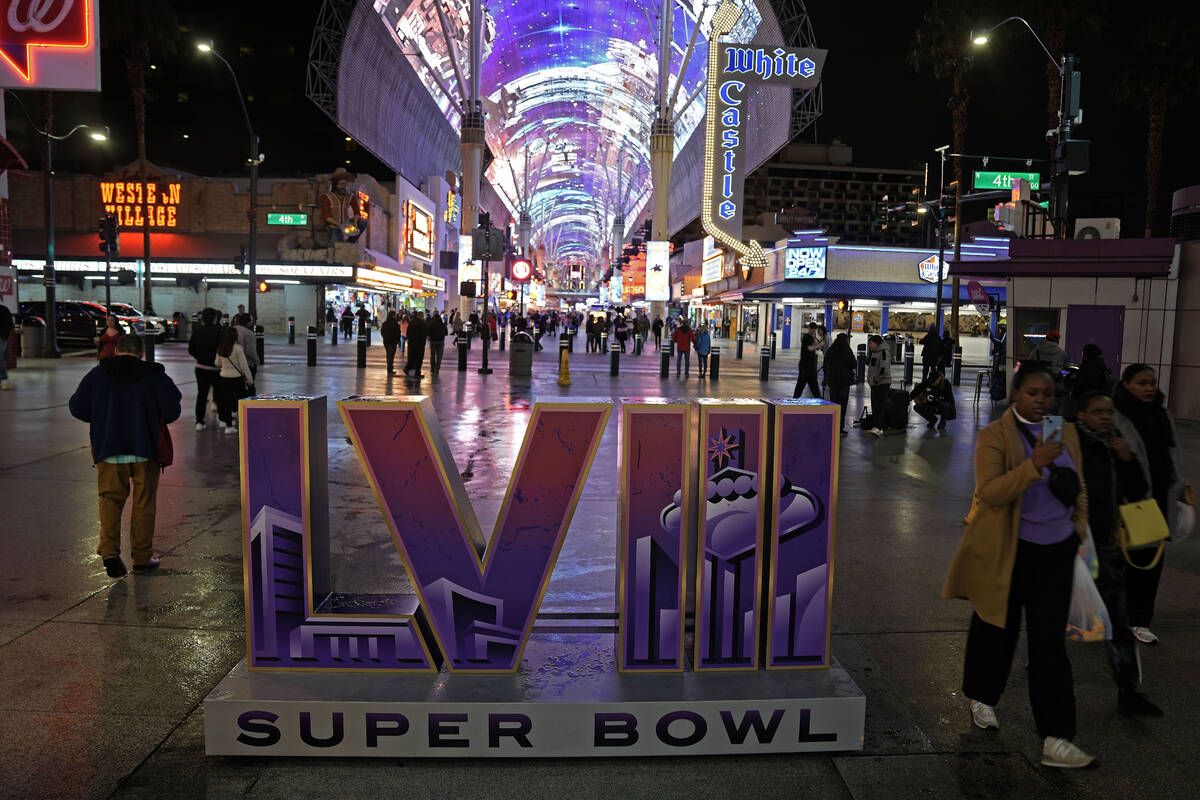Here’s why millions are excited for Super Bowl Sunday

Even if it’s not the game itself, millions of Americans will find something to be excited about when it comes to Super Bowl Sunday — and that’s before even factoring in the influence of Taylor Swift. Four in 10 U.S. adults are extremely or very excited for at least one part of the Super Bowl day’s festivities — whether that’s the game, commercials, halftime show or the Puppy Bowl — according to a new poll from The Associated Press-NORC Center for Public Affairs Research.
One-quarter of U.S. adults are excited for the actual Super Bowl game, where the Kansas City Chiefs will try to win their second title in a row when they play the San Francisco 49ers in Las Vegas. Another 27 percent are “somewhat excited” for the game, and about half say they are not too or not at all excited. This poll was conducted mostly before the Chiefs and 49ers (and Swift) were cemented to appear in this year’s Super Bowl. Three in 10 men say they are extremely or very excited for the Super Bowl game, compared to about 2 in 10 women. Black adults are more likely than white or Hispanic adults to be enthusiastic about the game.
Don Hallstone, who lives in Oregon but also spends time in Arizona, is especially fired up because he is a 49ers fan.
“I was excited about this matchup four years ago and it didn’t go my way,” Hallstone said of the Chiefs’ 31-20 victory over the Niners in the 2020 Super Bowl. “I’m excited because Brock Purdy is such an interesting story.”
Purdy was the last player drafted in 2022, making his unlikely rise to a Super Bowl quarterback one of the main storylines this week.
Another storyline is the Chiefs potentially on the cusp of building a dynasty, which has caused some fans to hope San Francisco wins.
“I usually just watch the commercials and the halftime show,” said Sally Mullins, who lives in Tennessee. “But I’m excited about the two teams that are playing this year because I want the 49ers to win. I like the Chiefs, don’t get me wrong, but I really want somebody else to win this year.”
About 2 in 10 adults overall, or 22 percent, are looking forward to the commercials during the Super Bowl. Democrats are more likely than Republicans to be excited for the commercials. Men and women are similarly likely to be excited for the commercials.
About 2 in 10 are excited for the Super Bowl halftime show, when Usher will perform. Black and Hispanic adults are more excited than white adults for the show. Adults under 45 are more likely than older adults to be eager for the performance. Democrats are more likely than Republicans to be looking forward to the show.
“I just like the halftime shows,” said Mel Bell, who lives in California. “They always put on a good performance, and they always bring out guest artists. It’s always exciting to see that. And then I like the commercials because they’re longer, they’re different, they’re always funny and they’re really entertaining.”
Overall, 36 percent of adults are excited about at least one element of the Super Bowl programming on CBS.
There is also the 20th annual Puppy Bowl to consider, where Animal Planet showcases over 100 adoptable puppies from shelters and rescue groups as they play on a makeshift football field. About 1 in 10 adults, or 14%, are extremely or very excited for the event. That includes 4 percent who are excited about the Puppy Bowl but not about the game, the ads or the halftime show. Women are more likely than men to be only excited about the puppies.
Those under 45 are more excited than people 45 and older about the canine special, in general.
Three in 10 women are not excited about the game itself but are excited for the commercials, halftime show or puppy appearances. A similar share of adults under 45 are not excited about the football game but have reason to be excited about another component of the day.
———
The poll of 1,152 adults was conducted Jan. 25—29, 2024, using a sample drawn from NORC’s probability-based AmeriSpeak Panel, which is designed to be representative of the U.S. population. The margin of sampling error for all respondents is plus or minus 4.0 percentage points.